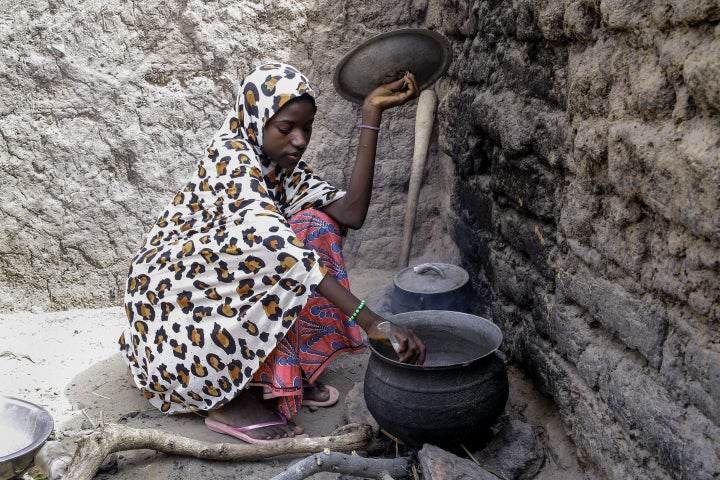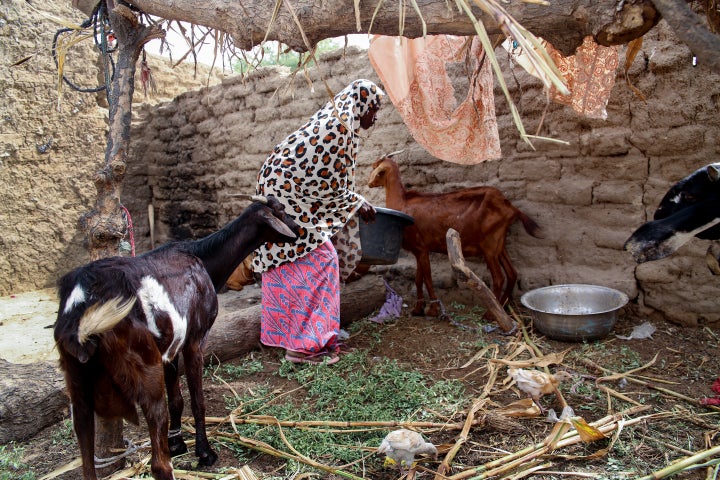
Every day, Ramatou, 13, starts off her morning by sweeping the backyard, washing dishes and preparing breakfast for her mother and seven siblings. Often, however, she has to skip the last chore because there isn’t any food available.
She wishes school were part of the routine, but that’s not a possibility.
Ramatou knows she’ll be lucky if she gets to stave off marriage for a few years, she told Save the Children in an interview conducted on behalf of The Huffington Post.
For Ramatou and her peers in Niger, this is simply the reality when you live in the country that’s been ranked the worst for girls.
Last month, Save the Children released a report of the best and worst places for girls based on five indicators, including child marriage and adolescent fertility rates. Of the 144 countries analyzed, Niger came in last. The bottom 20 countries are all in sub-Saharan Africa.
In Niger, 76 percent of young women are married before they turn 18. On average, 1 in 5 adolescent girls gives birth every year, according to the report.

Those two issues are of particular concern for young girls because of their devastating consequences.
Many parents choose to marry off their young daughters because they can’t afford to provide for them, but child marriage often goes hand in hand with the cycle of poverty. Girls who marry young are less likely to continue their education and are more susceptible to sexual abuse and intimate partner violence than those who marry later, according to the World Health Organization.
Complications related to pregnancy and childbirth are the second leading cause of death for 15- to 19-year-old girls globally, according to the WHO. Babies born to young mothers are also at a higher risk of being stillborn or dying in their first few weeks of life.
Ramatou has witnessed firsthand both the pressure to marry and the ramifications of child marriage. She has two friends who got married last year but don’t yet have children, she said.
She knows of other girls in her community who married young, had children and developed fistula, a condition involving a rupture between the vagina and the rectum or bladder. It’s caused by prolonged obstructed labor and can leave a woman unable to pass urine and feces, according to the Fistula Foundation.

When Ramatou’s family fell on hard times, her mother was eager to marry her off.
After Ramatou’s father was involved in a traffic accident, he could no longer work to support the family. Her parents separated, and the children and Ramatou’s mother moved into the grandparents’ home. But Ramatou soon became a “burden” on the family and her mother pushed her to get married. A man proposed and offered a dowry.
With support from her father and Save the Children outreach workers, Ramatou mustered the courage to resist.
Even so, she faces numerous other challenges on a daily basis.
Ramatou mostly subsists on pasta and rice. Her family can’t afford to eat meat or fish most days. Often, they go without food entirely.
The 13-year-old started school when she was eligible, but after she got sick, she dropped out. She wishes she could return, but right now that’s just not feasible.
Between 2008 and 2012, enrollment for girls in secondary school was 9.6 percent in Niger, according to UNICEF.
Ramatou said she’d like to learn to sew to help support her loved ones.
“I wish I could go to school and get an education,” Ramatou told Save the Children. “It would allow me to develop myself, to have a job and help my family.”

